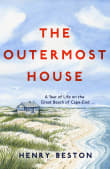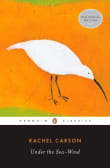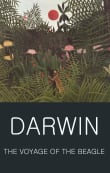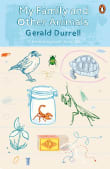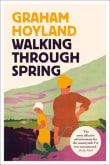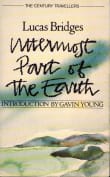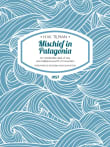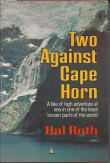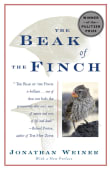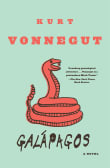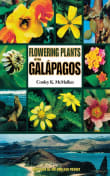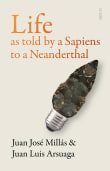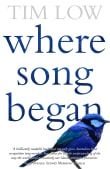The Voyage of the Beagle

Book description
With an Introduction by David Amigoni.
Charles Darwin's travels around the world as an independent naturalist on HMS Beagle between 1831 and 1836 impressed upon him a sense of the natural world's beauty and sublimity which language could barely capture. Words, he said, were inadequate to convey to those who…
Why read it?
8 authors picked The Voyage of the Beagle as one of their favorite books. Why do they recommend it?

I honestly can’t say whether or not I’d previously read The Voyage of the Beagle, but coming to it (again?) this year it was incredibly fresh, a brilliant work of what come under the category of ‘travel’ or ’nature writing’, but this would be to severely limit all the things Darwin addresses.
In addition to his observations on natural history, which really are astonishing and a joy to read, he deals with a lot of issues around social justice, for instance writing about the terrible conditions of slaves he encounters in various parts of the world. I’m so pleased…

This is a hero’s journey, right out of Joseph Campbell: a young man goes to sea, circumnavigates the globe, and experiences marvel after marvel of nature. What he learns on his journey matures into a kind of wisdom that transforms the world.
Darwin’s adventures keep me on the edge of my seat; his descriptions seduce me; his ideas inspire me. I want to be there with him as he recoils from the horrors of slavery in Brazil or observes the aftermath of a Chilean earthquake. And I feel I truly am with him, collecting birds and lizards on the islands…
From William's list on journeys of inner and outer discovery.

One of the things I love about this book is that it takes us back to 1831, when Darwin was just an obscure 22-year-old, following his passion for natural history by embarking on what would be a five-year circumnavigation of the globe. I get the impression he would be a fascinating, if exhausting, travelling companion since he is relentlessly curious about everything and everyone he sees.
My favorite chapter is on the Galápagos archipelago because Darwin is trying to do descriptive justice to the unearthly basaltic lava landscape, as well as unique flora and fauna. I find there’s an immediacy…
From Glynis' list on famous sea voyages we think we know, but don’t.

This is Darwin’s first book, the story of his five-year journey around the world. It starts in 1831 when he was 22.
The Beagle sailed where there was no government, no law, no hospital, and plenty of bandits and other things that might kill you. To get around, Darwin needed to rent or buy horses and just go. Maybe meet the Beagle in 10 days’ time further up the coast. Or maybe not. Even though it nearly killed him, it shines through that Darwin loved this adventure, and I loved reading about it.
Darwin was probably the greatest naturalist who…
From Benjamin's list on popular science books on biological evolution.

Darwin was chosen to accompany Captain FitzRoy on this voyage of exploration and science. Though Galápagos only represented five weeks of a five-year journey, it is the most significant chapter.
His journal takes us around the world as Darwin describes the natural history of the tropics and their relationship to the earth. He realised that isolated forms on archipelagos distil the process of natural selection. He was fascinated by the reptiles, especially the unique marine iguanas. Later the study of collected bird species brought him closer to his ideas on evolution.
Having lived on the islands, I am impressed by…
From David's list on the Galápagos Islands.

The circumnavigation of the world by HMS Beagle (1831-36), with the young Darwin travelling as a companion to Captain Robert Fitzroy, was more consequential in the advancement of human knowledge than any of the voyages of Columbus, Magellan, or Cook. We sailed south into the Roaring Forties with Darwin’s highly readable narrative always at hand; more than half of it is set in Patagonia. It was thrilling to contemplate at Puerto Deseado the unchanged landscape that had brought to Darwin’s mind two lines from Shelley: “The wilderness has a mysterious tongue/Which teaches awful doubt.” And, as we left harbour, to…
From Nicholas' list on sailing in Patagonia.

In 1831 at the age of 22 and freshly minted by his university education, Darwin was offered the chance of a lifetime: to accompany Captain Robert Fitzroy on HMS Beagle for a circumnavigation of the globe. He was in the right place, at the right time, and knew the right people – and although he was only 3rd choice for that position, fate would insist on his being chosen. His experiences on that voyage laid the foundations for his theory of evolution by means of Natural Selection some 28 years later. We are so familiar with the image of Darwin…
From David's list on stretching your imagination.

In December of 1831, a 22-year-old Charles Darwin set sail aboard HMS Beagle out of Plymouth, England, on a five-year voyage around the world. Upon returning, he published his notes—hence this book—and after 19 years of ruminating on his observations he birthed his earth-shaking masterpiece, On The Origin of Species. It is that fact—knowing the end of the story before even Darwin—that makes this book more than just another chronicle of a momentous expedition. It is a privileged peek at a nascent genius on his journey toward rewriting the very history of natural history.
From William's list on nature by naturalists.
Want books like The Voyage of the Beagle?
Our community of 12,000+ authors has personally recommended 100 books like The Voyage of the Beagle.


